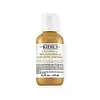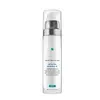What's inside
What's inside
 Key Ingredients
Key Ingredients

 Benefits
Benefits

 Concerns
Concerns

 Ingredients Side-by-side
Ingredients Side-by-side

Water
Skin ConditioningGlycerin
HumectantIsopropyl Lauroyl Sarcosinate
Skin ConditioningDimethicone
EmollientNiacinamide
SmoothingPropanediol
SolventPropylene Glycol
HumectantC14-22 Alcohols
Emulsion StabilisingPanthenol
Skin ConditioningDimethicone/Vinyl Dimethicone Crosspolymer
Skin ConditioningPhenoxyethanol
PreservativeTocopherol
AntioxidantCapryloyl Salicylic Acid
ExfoliatingC12-20 Alkyl Glucoside
EmulsifyingCarbomer
Emulsion StabilisingPyridoxine Hcl
Skin ConditioningChlorphenesin
AntimicrobialPentaerythrityl Tetra-Di-T-Butyl Hydroxyhydrocinnamate
AntioxidantXanthan Gum
EmulsifyingAcrylates/C10-30 Alkyl Acrylate Crosspolymer
Emulsion StabilisingCitrus Limon Peel Oil
MaskingLimonene
PerfumingCalendula Officinalis Flower
Skin ConditioningTrisodium Ethylenediamine Disuccinate
Zinc PCA
HumectantMaltodextrin
AbsorbentSodium Hydroxide
BufferingCalendula Officinalis Flower Extract
MaskingGeranium Maculatum Oil
MaskingChamomilla Recutita Flower Oil
MaskingCitric Acid
BufferingCitral
PerfumingCamellia Sinensis Leaf Extract
AntimicrobialCitronellol
PerfumingGeraniol
PerfumingLinalool
PerfumingCymbopogon Schoenanthus Oil
MaskingArtemisia Absinthium Extract
Skin ConditioningWater, Glycerin, Isopropyl Lauroyl Sarcosinate, Dimethicone, Niacinamide, Propanediol, Propylene Glycol, C14-22 Alcohols, Panthenol, Dimethicone/Vinyl Dimethicone Crosspolymer, Phenoxyethanol, Tocopherol, Capryloyl Salicylic Acid, C12-20 Alkyl Glucoside, Carbomer, Pyridoxine Hcl, Chlorphenesin, Pentaerythrityl Tetra-Di-T-Butyl Hydroxyhydrocinnamate, Xanthan Gum, Acrylates/C10-30 Alkyl Acrylate Crosspolymer, Citrus Limon Peel Oil, Limonene, Calendula Officinalis Flower, Trisodium Ethylenediamine Disuccinate, Zinc PCA, Maltodextrin, Sodium Hydroxide, Calendula Officinalis Flower Extract, Geranium Maculatum Oil, Chamomilla Recutita Flower Oil, Citric Acid, Citral, Camellia Sinensis Leaf Extract, Citronellol, Geraniol, Linalool, Cymbopogon Schoenanthus Oil, Artemisia Absinthium Extract
Water
Skin ConditioningGlycerin
HumectantDimethicone
EmollientNiacinamide
SmoothingPropanediol
SolventDimethicone/PEG-10/15 Crosspolymer
Methylsilanol/Silicate Crosspolymer
Skin ConditioningSodium Chloride
MaskingPolymethylsilsesquioxane
Phenoxyethanol
PreservativeMicrocrystalline Cellulose
AbsorbentCI 77163
Cosmetic ColorantChlorphenesin
AntimicrobialCaprylyl Glycol
EmollientSodium Citrate
BufferingEthylhexyl Hydroxystearate
EmollientPEG-10 Dimethicone
Skin ConditioningDisodium EDTA
Cellulose Gum
Emulsion StabilisingLaminaria Digitata Extract
Skin ProtectingAdenosine
Skin ConditioningCitrus Aurantium Amara Flower Oil
MaskingMelaleuca Viridiflora Leaf Oil
Skin ConditioningTetradecyl Aminobutyroylvalylaminobutyric Urea Trifluoroacetate
Skin ConditioningLinalool
PerfumingCymbopogon Flexuosus Oil
MaskingCitral
PerfumingLimonene
PerfumingPelargonium Graveolens Flower Oil
MaskingWater, Glycerin, Dimethicone, Niacinamide, Propanediol, Dimethicone/PEG-10/15 Crosspolymer, Methylsilanol/Silicate Crosspolymer, Sodium Chloride, Polymethylsilsesquioxane, Phenoxyethanol, Microcrystalline Cellulose, CI 77163, Chlorphenesin, Caprylyl Glycol, Sodium Citrate, Ethylhexyl Hydroxystearate, PEG-10 Dimethicone, Disodium EDTA, Cellulose Gum, Laminaria Digitata Extract, Adenosine, Citrus Aurantium Amara Flower Oil, Melaleuca Viridiflora Leaf Oil, Tetradecyl Aminobutyroylvalylaminobutyric Urea Trifluoroacetate, Linalool, Cymbopogon Flexuosus Oil, Citral, Limonene, Pelargonium Graveolens Flower Oil
 Reviews
Reviews

Ingredients Explained
These ingredients are found in both products.
Ingredients higher up in an ingredient list are typically present in a larger amount.
Chlorphenesin is a synthetic preservative. It helps protect a product against bacteria in order to extend shelf life. In most cases, Chlorphenesin is paired with other preservatives such as phenoxyethanol and caprylyl glycol.
Chlorphenesin is a biocide. This means it is able to help fight the microorganisms on our skin. It is also able to fight odor-releasing bacteria.
Chlorphenesin is soluble in both water and glycerin.
Studies show Chlorphenesin is easily absorbed by our skin. You should speak with a skincare professional if you have concerns about using Chlorphenesin.
Learn more about ChlorphenesinCitral is a fragrance and used to add a lemon-like scent to products. It is both naturally found in plants and created synthetically. In plants, it is commonly occurring in lemon myrtle, lemongrass, lemon tea-tree, lemon verbena, and other citruses.
The EU mandates Citral be listed separately as a fragrance. It is a known allergen and may cause contact dermatitis. Citral can also used as a masking ingredient.
The term 'fragrance' is not regulated in many countries. In many cases, it is up to the brand to define this term. For instance, many brands choose to label themselves as "fragrance-free" because they are not using synthetic fragrances. However, their products may still contain ingredients such as essential oils that are considered a fragrance.
The term 'citral' is a collective term for two geometric isomers: geranial/Citral A and neral/Citral B.
Learn more about CitralDimethicone is a type of synthetic silicone created from natural materials such as quartz.
What it does:
Dimethicone comes in different viscosities:
Depending on the viscosity, dimethicone has different properties.
Ingredients lists don't always show which type is used, so we recommend reaching out to the brand if you have questions about the viscosity.
This ingredient is unlikely to cause irritation because it does not get absorbed into skin. However, people with silicone allergies should be careful about using this ingredient.
Note: Dimethicone may contribute to pilling. This is because it is not oil or water soluble, so pilling may occur when layered with products. When mixed with heavy oils in a formula, the outcome is also quite greasy.
Learn more about DimethiconeGlycerin is already naturally found in your skin. It helps moisturize and protect your skin.
A study from 2016 found glycerin to be more effective as a humectant than AHAs and hyaluronic acid.
As a humectant, it helps the skin stay hydrated by pulling moisture to your skin. The low molecular weight of glycerin allows it to pull moisture into the deeper layers of your skin.
Hydrated skin improves your skin barrier; Your skin barrier helps protect against irritants and bacteria.
Glycerin has also been found to have antimicrobial and antiviral properties. Due to these properties, glycerin is often used in wound and burn treatments.
In cosmetics, glycerin is usually derived from plants such as soybean or palm. However, it can also be sourced from animals, such as tallow or animal fat.
This ingredient is organic, colorless, odorless, and non-toxic.
Glycerin is the name for this ingredient in American English. British English uses Glycerol/Glycerine.
Learn more about GlycerinLimonene is a fragrance that adds scent and taste to a formulation.
It's found in the peel oil of citrus fruits and other plants such as lavender and eucalyptus. The scent of limonene is generally described as "sweet citrus".
Limonene acts as an antioxidant, meaning it helps neutralize free radicals.
When exposed to air, oxidized limonene may sensitize the skin. Because of this, limonene is often avoided by people with sensitive skin.
The term 'fragrance' is not regulated in many countries. In many cases, it is up to the brand to define this term. For instance, many brands choose to label themselves as "fragrance-free" because they are not using synthetic fragrances. However, their products may still contain ingredients such as essential oils that are considered a fragrance.
Learn more about LimoneneLinalool is a fragrance and helps add scent to products. It's derived from common plants such as cinnamon, mint, citrus, and lavender.
Like Limonene, this ingredient oxidizes when exposed to air. Oxidized linalool can cause allergies and skin sensitivity.
This ingredient has a scent that is floral, spicy tropical, and citrus-like.
Learn more about LinaloolNiacinamide is a multitasking form of vitamin B3 that strengthens the skin barrier, reduces pores and dark spots, regulates oil, and improves signs of aging.
And the best part? It's gentle and well-tolerated by most skin types, including sensitive and reactive skin.
You might have heard of "niacin flush", or the reddening of skin that causes itchiness. Niacinamide has not been found to cause this.
In very rare cases, some individuals may not be able to tolerate niacinamide at all or experience an allergic reaction to it.
If you are experiencing flaking, irritation, and dryness with this ingredient, be sure to double check all your products as this ingredient can be found in all categories of skincare.
When incorporating niacinamide into your routine, look out for concentration amounts. Typically, 5% niacinamide provides benefits such as fading dark spots. However, if you have sensitive skin, it is better to begin with a smaller concentration.
When you apply niacinamide to your skin, your body converts it into nicotinamide adenine dinucleotide (NAD). NAD is an essential coenzyme that is already found in your cells as "fuel" and powers countless biological processes.
In your skin, NAD helps repair cell damage, produce new healthy cells, support collagen production, strengthen the skin barrier, and fight environmental stressors (like UV and pollution).
Our natural NAD levels start to decline with age, leading to slower skin repair, visible aging, and a weaker skin barrier. By providing your skin niacinamide, you're recharging your skin's NAD levels. This leads to stronger, healthier, and younger looking skin.
Another name for vitamin B3 is nicotinamide. This vitamin is water-soluble and our bodies don't store it. We obtain Vitamin B3 from either food or skincare. Meat, fish, wheat, yeast, and leafy greens contain vitamin B3.
The type of niacinamide used in skincare is synthetically created.
Learn more about NiacinamidePhenoxyethanol is a preservative that has germicide, antimicrobial, and aromatic properties. Studies show that phenoxyethanol can prevent microbial growth. By itself, it has a scent that is similar to that of a rose.
It's often used in formulations along with Caprylyl Glycol to preserve the shelf life of products.
Propanediol is an all-star ingredient. It softens, hydrates, and smooths the skin.
It’s often used to:
Propanediol is not likely to cause sensitivity and considered safe to use. It is derived from corn or petroleum with a clear color and no scent.
Learn more about PropanediolWater. It's the most common cosmetic ingredient of all. You'll usually see it at the top of ingredient lists, meaning that it makes up the largest part of the product.
So why is it so popular? Water most often acts as a solvent - this means that it helps dissolve other ingredients into the formulation.
You'll also recognize water as that liquid we all need to stay alive. If you see this, drink a glass of water. Stay hydrated!
Learn more about Water